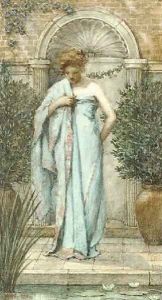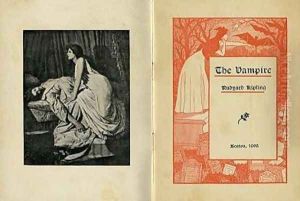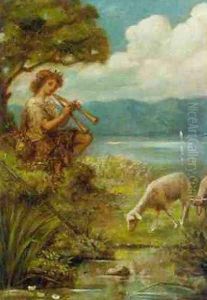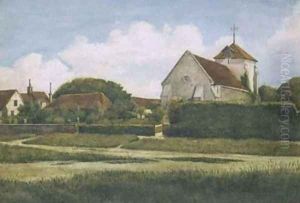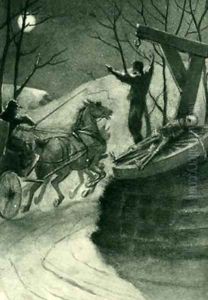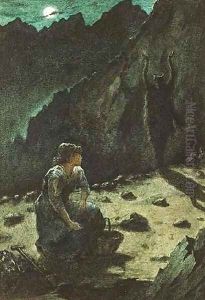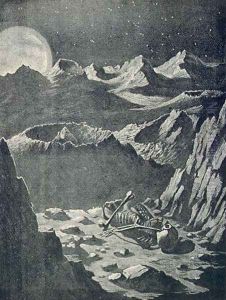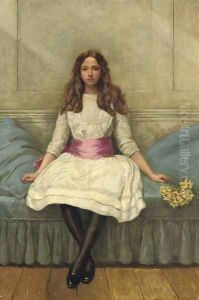Sir Philip Burne-Jones Paintings
Sir Philip Burne-Jones was a British painter and the only child of the Pre-Raphaelite artist Sir Edward Burne-Jones and Georgiana Burne-Jones. He was born on October 2, 1861, in London, England. His upbringing was heavily influenced by the artistic and cultural milieu his parents were part of, which included connections to notable figures such as William Morris and Dante Gabriel Rossetti.
Burne-Jones initially attended Oxford University but left without completing his degree to pursue a career in painting. He trained with his father and was influenced by the latter's work and the broader Pre-Raphaelite movement. Although he did not achieve the same level of fame as his father, Philip Burne-Jones exhibited regularly at the New Gallery and the Royal Academy in London.
His style was characterized by a blend of the romantic and aesthetic movements, and he painted portraits, figure compositions, and occasional landscapes. His works were often noted for their melancholic atmosphere and included both modern life subjects and medieval themes, the latter being a hallmark of the Pre-Raphaelite Brotherhood.
One of Philip's most well-known paintings is 'The Vampire,' painted in 1897, which depicts a femme fatale figure and was inspired by a poem by Rudyard Kipling. The painting was somewhat sensational at the time and is often remembered for its embodiment of fin-de-siècle themes of decadence and the supernatural.
Despite his artistic endeavors, Philip Burne-Jones did not achieve the same critical acclaim as his father and was often overshadowed by Edward's legacy. Nevertheless, he was knighted in 1926 for his contributions to art but passed away later that same year, on June 21, in London. His works are part of collections in various British institutions, contributing to the understanding of the later phases of the Pre-Raphaelite tradition and the transition to modern British art.
